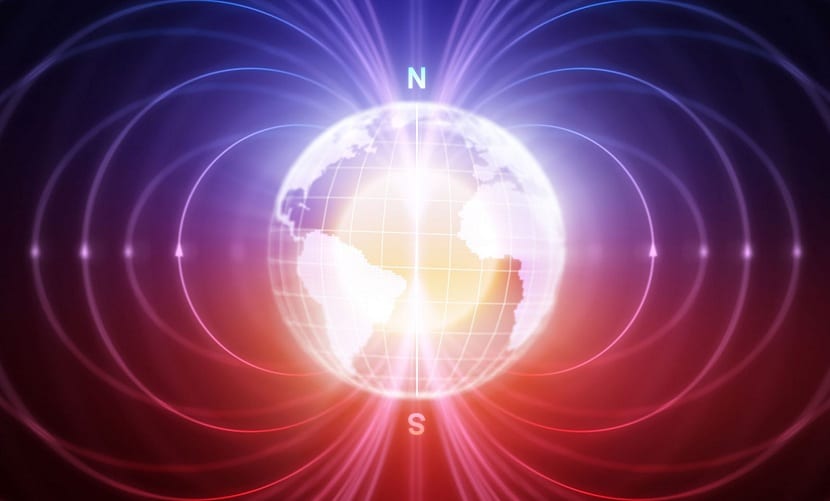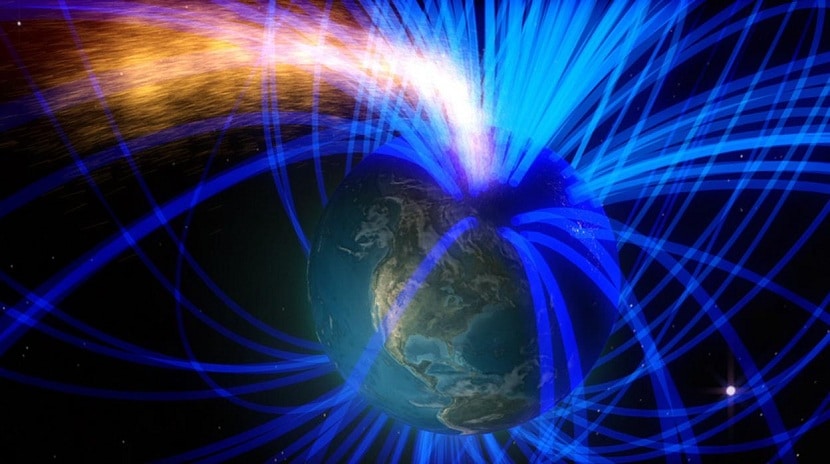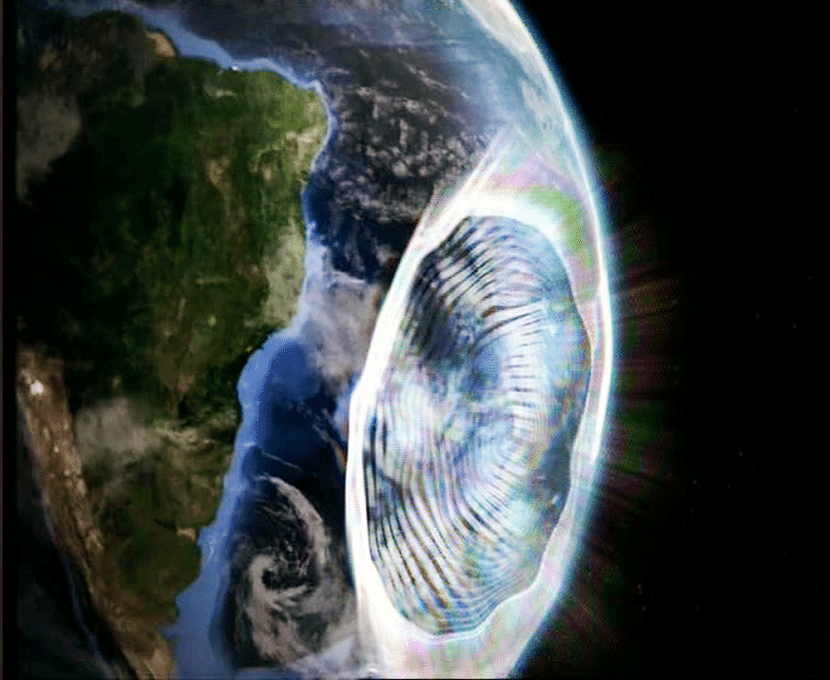
Our planet has a magnetic field that performs various protective functions against the sun's ultraviolet rays. The science that studies the origin, properties and variations of this earth's magnetic field is called geomagnetism. In this post we are going to talk about geomagnetism and all its characteristics.
If you want to know more about geomagnetism, keep reading.
What is geomagnetism

Our planet has a magnetic field that can be observed from one point and has two origins: one internal and one external. Geomagnetism is the science that is responsible for studying the origin, properties and holidays of this earth's magnetic field. Magnetic poles are those found at points where the axis of the dipole intersects the earth's surface. The magnetic equator is the plane perpendicular to this axis. It's an internal source field and it's not even constant on my uniform. As time progresses, we are seeing some periodic rapid variations, the most important being that it varies with a period of 24 hours. These variations are known as secular variation.
The magnetic field in external origin is the one that is mainly due to solar activity on the ionosphere and the magnetosphere. There are other periodic oscillations such as the lunar variation, annual variation and undecennial variation. There are also some rapid variations that come from an external origin such as magnetic pulsations, bays, magnetic storms and chromospheric effects.
Key features

When we talk about the Earth's geomagnetic field we see that the main characteristic is that it is dipolar. This means that it has two poles. On the one hand we have the north pole and on the other hand the south pole. Both poles are analogous. It is as if it were the ends of a magnet. Thanks to this magnetic field compasses work. This magnetic field is relatively weak on the planet's surface, so compasses are made by adding a lightweight magnet to it.
In the magnetic field, imaginary lines are produced that are mostly concentrated at the poles. The magnetic north pole is the south pole of the geomagnetic field, while the geomagnetic south pole is the north pole that is commonly known.
To give us an idea, it is as if our planet had a giant magnet inside it and its ends point towards the poles. The direction of this hypothetical magnet is not completely straight. Starting from the center sides, you will find the bar slightly skewed. This is what is known as geomagnetic declination. The difference between geographic north and geomagnetic north is indicated by the compass. It is a kind of angle that varies depending on the position we are in and the weather.
As we have mentioned before, the Earth's magnetic field changes over the years. Currently, geomagnetism is studying that the Earth's magnetic field is inclined at an angle of 10 degrees with respect to the axis of rotation of the planet. We remember that the axis of rotation of the planet has an inclination of 23 degrees.
This magnetic field extends from the interior of the planet to outer space. Out of outer space is where it meets I've called the solar wind. The solar wind is what is called the flow of particles that are released from the sun and that are charged with electrons, protons and alpha particles.
Geomagnetism at the National Geographic Institute

The service that studies geomagnetism has the main mission of studying and measuring the earth's magnetic field within each national territory. To do this, have geomagnetic observatories that are used to continuously record all the variables that act on the magnetic field. The data are obtained in various observatories and are processed to produce geomagnetic yearbooks.
Measurements are made at repeating stations and densifications are made less frequently at so-called map points. Various values can be obtained to contrast between some points and another on the planet. Let's not forget that the Earth's magnetic field does not act equally on all sides. This means that a kind of cartography has to be elaborated at the world level in order to establish the variables that act in the change of the components of the Earth's magnetic field.
There are some places on the planet where cartographies are not made. For example, this occurs in the Canary Islands. This is because on these islands there is a strong influence of their volcanic nature that makes mapping at these scales unfeasible. The data obtained in these geomagnetic observatories are used for the execution of various research works and collaborations with some international organizations.
Causes of geomagnetism
The origin of geomagnetism is under the Earth. As we already know, our planet has several inner layers. Scientists think that the inner core is made of solid iron and surrounded by a kind of extremely hot liquid metal. Because the flow of iron creates electrical currents, the magnetic field is generated.
Because our planet also has a rotational motion, it contributes to this heat being able to radiate from the core to other parts of the interior. The magnetic field of the planet is made up of magnetic fields being superimposed on several sources. One origin is internal and the other is external. The internal origin is responsible for more than 90% of the magnetic field. This internal origin it is not stable but it varies over time. Variations in the Earth's magnetic field occur over very long times and require updating of the models that study them.
As you can see, geomagnetism is a science that tries to study the evolution, characteristics and changes that occur on our planet with respect to the Earth's magnetic field.
I hope that with this information you can learn more about geomagnetism.
Thanks for the very important information I liked it a lot since I am studying these phenomena at the moment and they were very helpful.